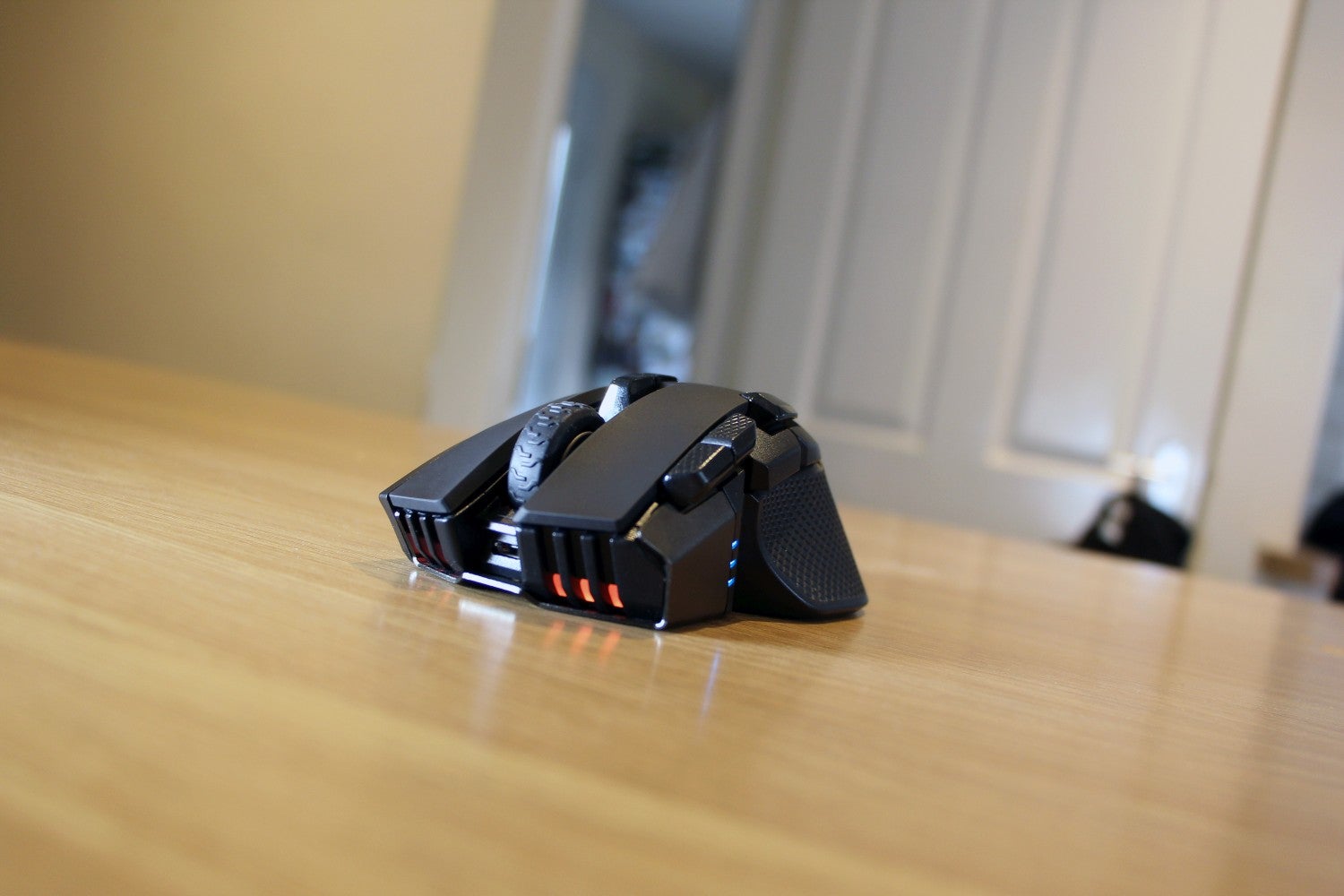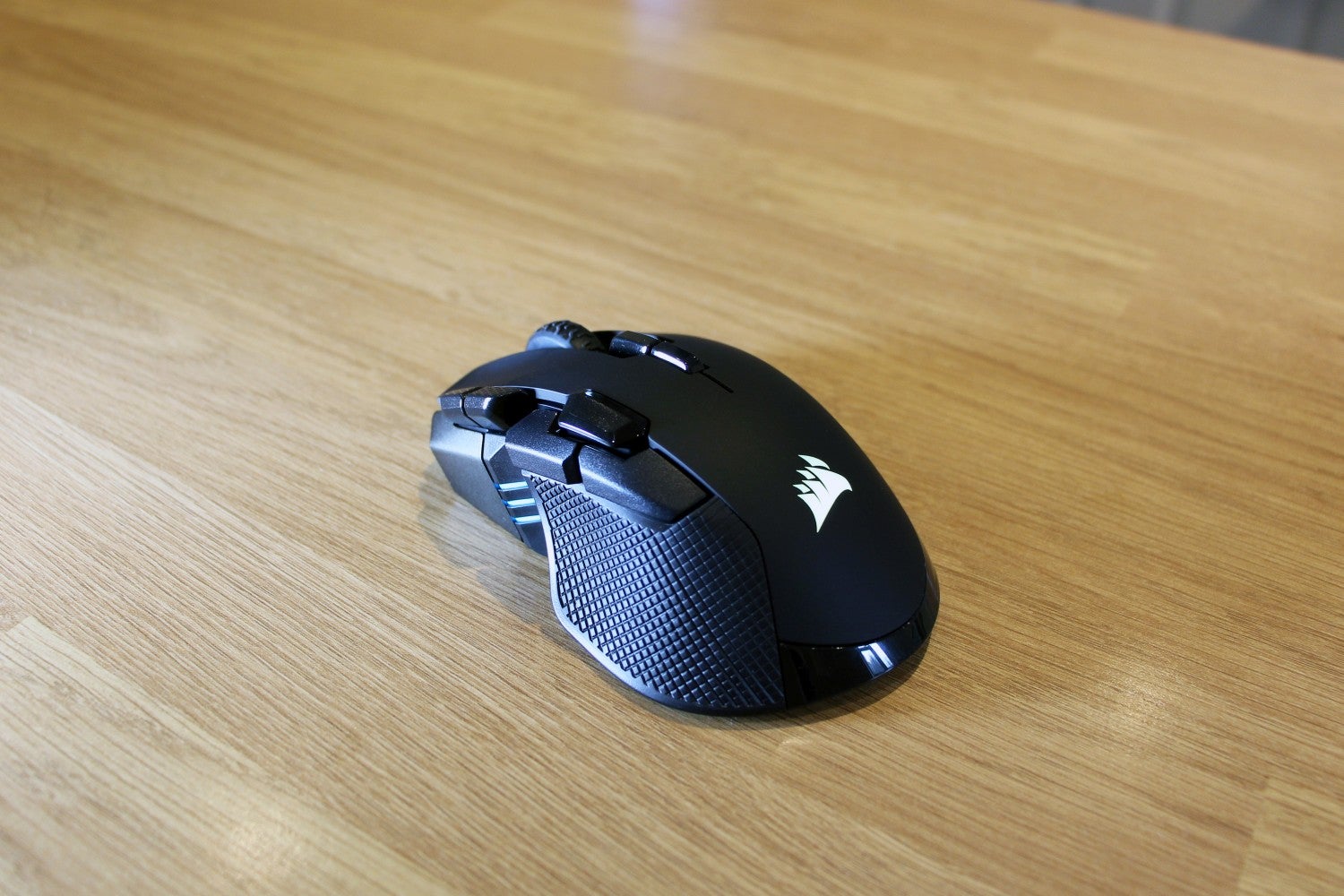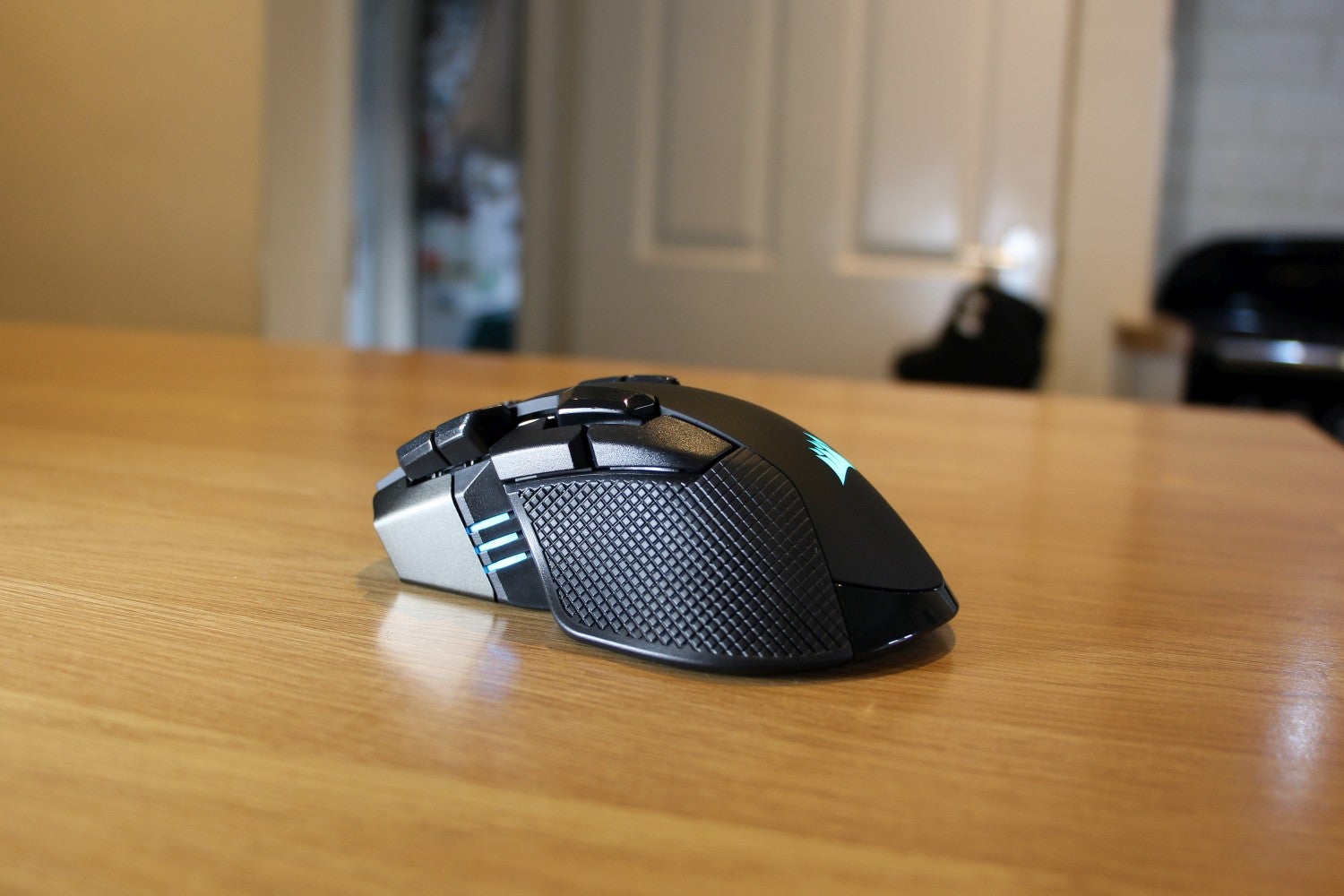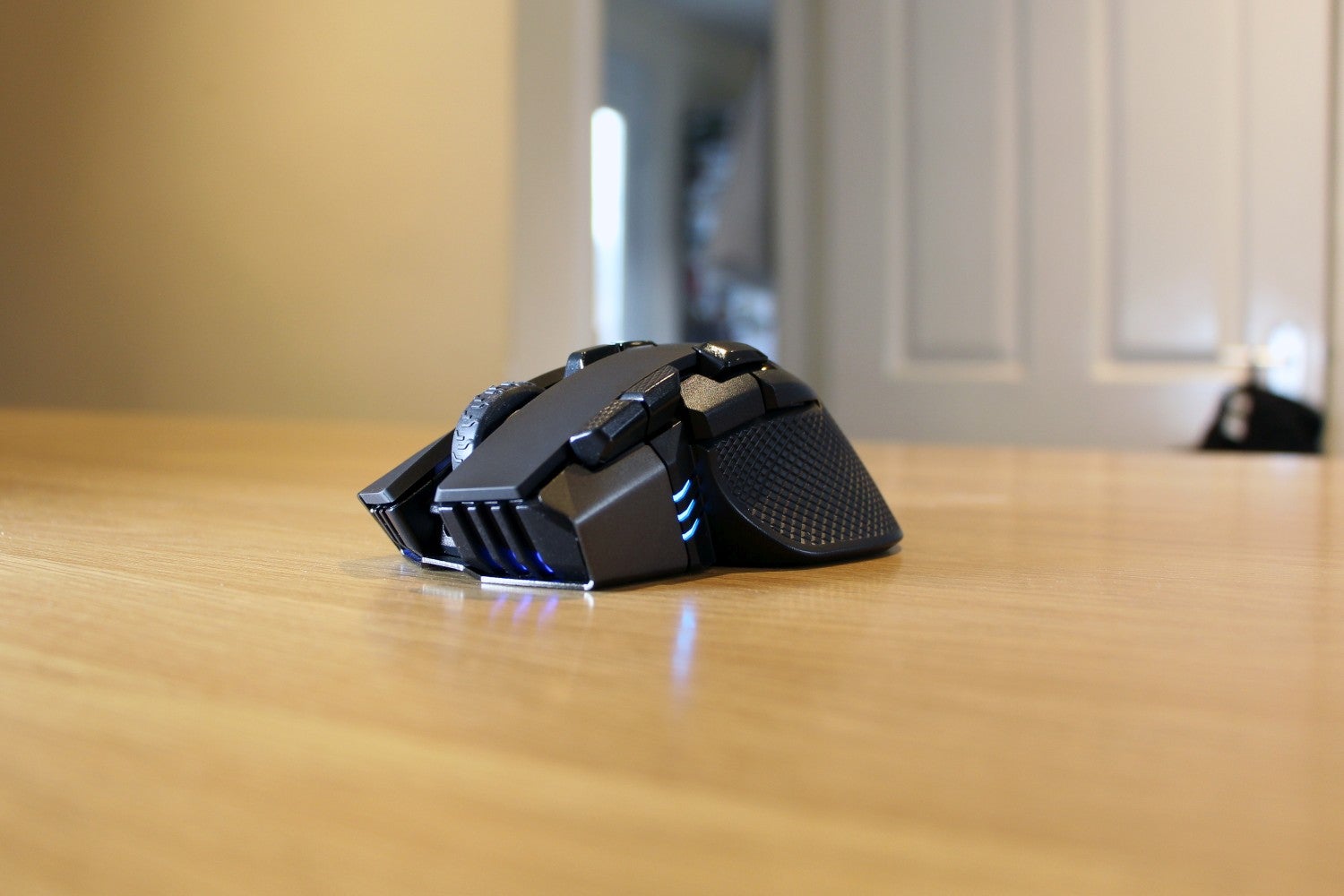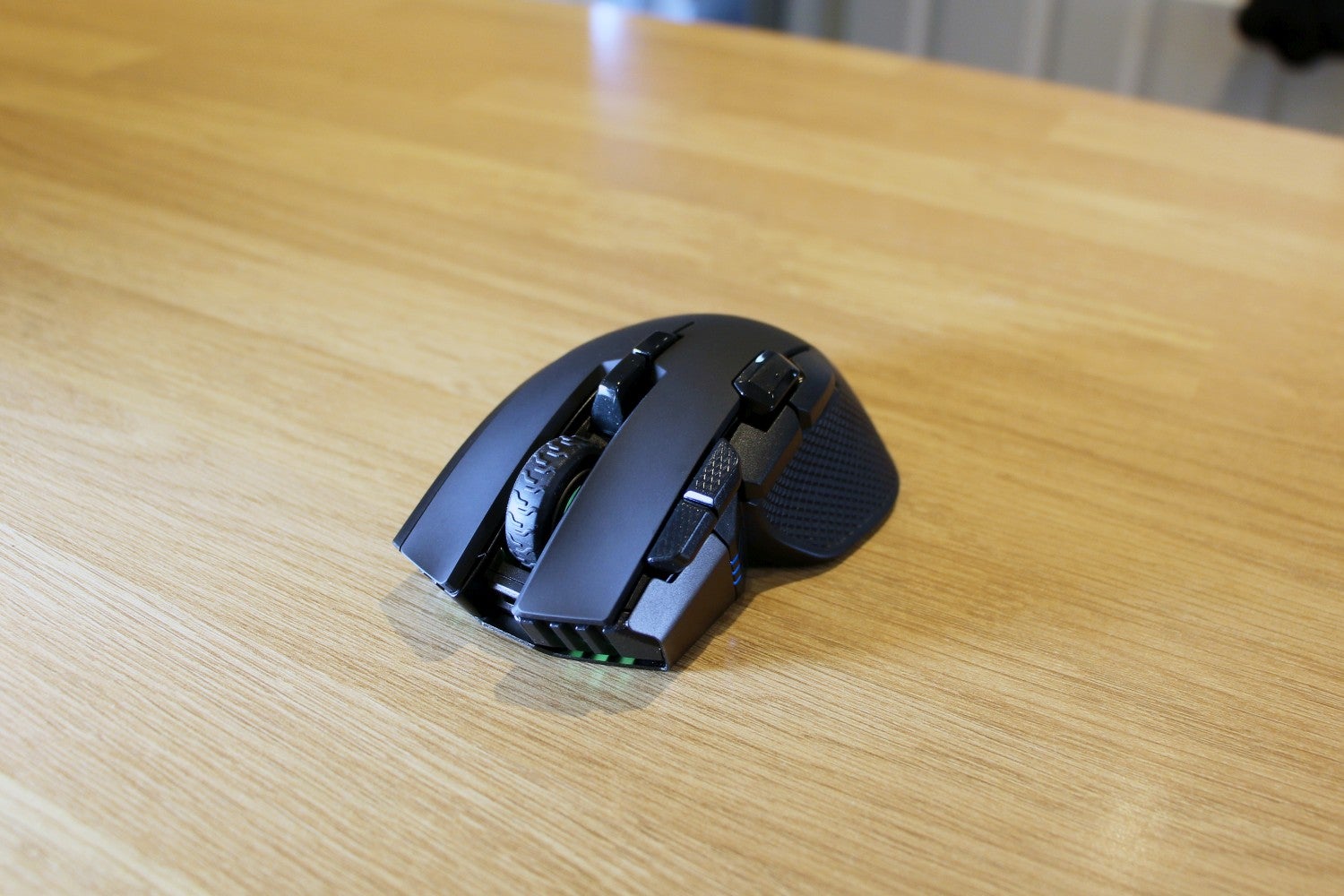Corsair Ironclaw RGB Wireless Review
Corsair Ironclaw RGB Wireless Review
Is the Corsair Ironclaw RGB Wireless the best wire-free gaming mouse on the market today?
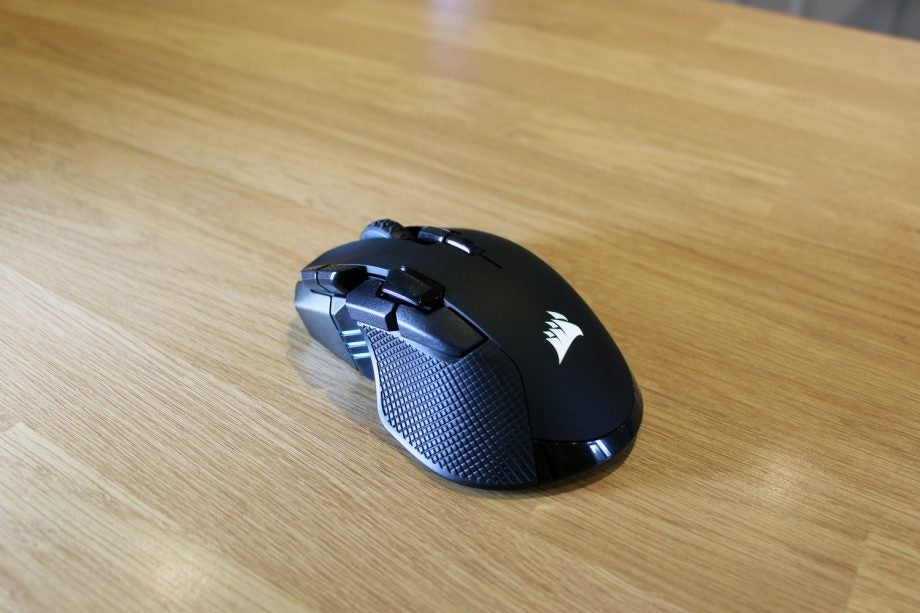
Verdict
The Corsair Ironclaw RGB Wireless has superb cable-free performance, a good selection of buttons and top-notch software along with a high-end specification. All of those attributes mean that it’s a great gaming option at a reasonable price. However, be aware that some of its buttons have potentially annoying nuances and that this mouse is large, heavy and not ambidextrous.
Pros
- Top-notch wireless performance
- Very good internal specifications
- Good core button, tracking and scroll-wheel performance
- Great software
Cons
- Some buttons are a tad too soft
- Inconsistent looks
- Larger and heavier than many rivals
Key Specifications
- Review Price: £70
- 18,000 DPI
- 10 buttons
- 50-million click endurance
- 3 RGB LED zones
- 2.4GHz wireless
- Bluetooth 4.2
- USB
- 80 x 126 x 45mm
- 130g
- Right-handed design
The Corsair Ironclaw RGB Wireless is a gaming mouse that’s aiming to deliver high-end technology without the high-end price.
This particular rodent will set you back £70 in the UK and $80 in the US, which places it firmly into the middle of the market.
Corsair Ironclaw RGB Wireless – Design and features
Its mid-range price hasn’t stopped Corsair including tempting headline features – wireless operation and a mammoth 18,000 DPI sensitivity setting from its PixArt PMW3391 optical sensor.
The Ironclaw’s wireless technology uses the 2.4GHz band, and it’s joined by Bluetooth and USB operation, which is handy if you want to keep gaming while the mouse is charging.
The Corsair’s mid-market price does mean that you don’t get all the bells and whistles. No charging dock or wireless charging is included, and there isn’t a cavity on the mouse for storing the USB dongle.
That 18,000 DPI sensitivity setting is huge, and it’s joined by a 400 IPS tracking speed, a maximum acceleration force of 50G and a 50 million click endurance rating. They’re great figures, and in line with the top mice on the market – you’re only going to hit 20,000 DPI and 650 IPS by spending twice as much.
More important, though, is the practicality of these features. The 18,000 DPI sensitivity level is vast, and too high for virtually every user – even competitive e-sports players won’t max out this mouse. The rest of those figures are amply accommodating, too. Put simply, the Corsair’s figures are fine for any kind of gaming, so you don’t need to look for anything higher.
The Ironclaw has 10 customisable buttons, with five installed on the left-hand edge and two above the scroll wheel. It’s right-handed, not ambidextrous.
The Corsair pairs its high-end features with bold design, although the Ironclaw doesn’t always work when it comes to looks.
The left side is coated with an excellent, textured rubber, with soft-touch plastic used elsewhere. Build quality is tremendous.
However, the Corsair’s design looks a bit incoherent, with a mish-mash of industrial slats, soft-touch plastic and glossy plastic. And, while the left-hand edge has thumb support, it doesn’t extend far enough forward.
It’s big, too. The Ironclaw is 45mm tall, 80mm wide and 126mm long, and it weighs 130g. The length is fine, but it’s taller, heavier and wider than most other mice. If you have larger hands then this won’t be a problem, and it’s fine for all grip types. However, people with smaller hands may struggle, and there are no adjustable weights.
The Ironclaw is riddled with lighting. The logo, scroll wheel and the area beneath the main buttons all have RGB LEDs, and three lights below the left-hand buttons can be used to indicate battery, wireless, DPI or profile levels.
The lighting isn’t necessarily the best: the logo and front-edge lighting isn’t visible to the user, and the scroll-wheel lighting is weak.
As usual, the lighting and every button on this mouse are fully customisable. Corsair iCUE remains a top-tier app: lighting options are easy to tweak, the DPI settings are straightforward and an infinite number of profiles can be saved using the fully customisable buttons.
Surface calibration can be performed if the mouse is attached using a USB cable. And, unusually, the Corsair allows DPI to be adjusted in single-DPI increments rather than in gaps of 50 or 100. That allows huge granularity in how you tune this mouse.
Related: Best Gaming Monitor 2020
Corsair Ironclaw RGB Wireless – Performance
The Corsair has flawless wireless performance, with no slowdown or connection issues. Corsair claims less than 1ms of latency for the Ironclaw, and we can absolutely believe that – it’s incredibly fast. The optical sensor had no issues, gliding flawlessly across multiple surfaces.
USB performance is great, and the Corsair is a little slower when using Bluetooth – but still responsive enough for gaming.
Corsair claims that the Ironclaw will last for 24 hours in wireless mode, and those claims stack up in real-world use.
The Ironclaw is very good for gaming, although its buttons do have tiny quibbles and nuances that will put off some players.
The main buttons use Omron switches, and they’re excellent – fast, consistent and solid, with no accidentally double-clicking. They’re fantastic for virtually every gamer and gaming scenario and better than most of the other mice on the market, although some people may prefer buttons that feel a tad lighter and shallower.
There’s no denying that the left-hand side of the Ironclaw is busy, with those five extra buttons, but I was fine once we’d acclimatised. The two extra buttons in the forward position are great: easy to reach from the main mouse buttons, and with the speed and snap required to function as welcome little triggers.
The other buttons on the left-hand side are reasonable, but not as impressive. The top one is too high to be comfortable when using your thumb if you have larger hands, and it’s too soft and heavy. The two below are easier to reach, but they’re still a little too soft.
The scroll wheel is good but, again, not without a minor issue: it’s a tad too tricky to press, especially in the heat of battle.
Related: Best Gaming Laptop 2020
Should you buy the Corsair Ironclaw RGB Wireless?
The Corsair Ironclaw RGB Wireless is very good. It ticks the boxes in several key areas – it has flawless, fast wireless and tracking performance, a great core specification and robust design.
When it comes to gaming, there’s a lot to like: the main buttons are superb, there are five left-hand buttons and the design is generally comfortable. It’s certainly a better option than virtually anything else at this price.
That’s not to say that this product is without problems. It’s large and heavy, so people with smaller hands may not find it comfortable. The side buttons are too soft and the scroll wheel is a tad heavy. This mouse isn’t ambidextrous either.
Bear in mind, though, that you’re only going to solve these problems and maintain this specification by spending more cash – and that my issues with the buttons are tiny complaints. They won’t bother the vast majority of gamers, and they still see the Ironclaw improving on most of its competition.
These minor issues don’t hinder the Corsair Ironclaw RGB Wireless too much – it’s still one of the best cable-free options in the mid-range gaming market. It’s not perfect, but it is very good indeed.


